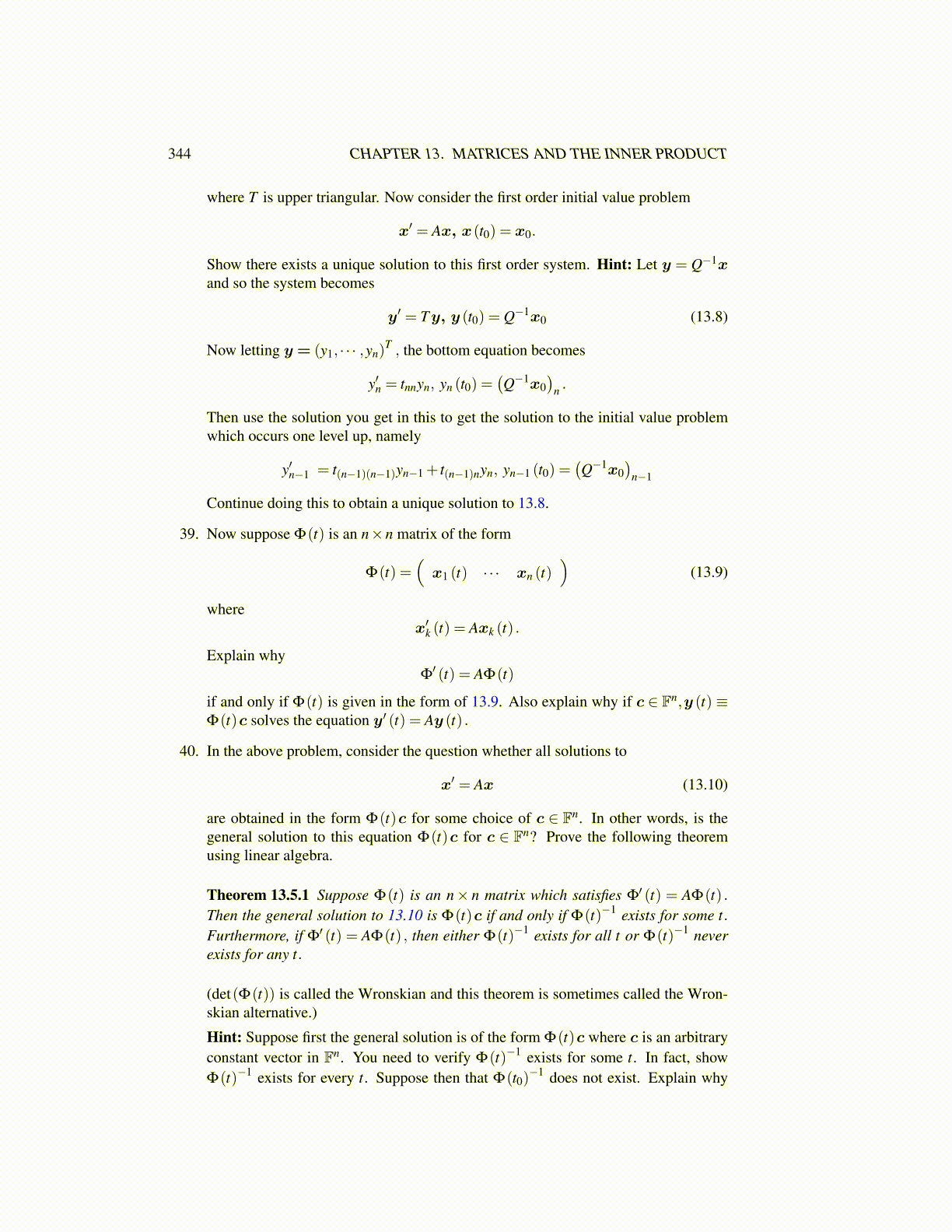
344 CHAPTER 13. MATRICES AND THE INNER PRODUCT
where T is upper triangular. Now consider the first order initial value problem
x′ = Ax, x(t0) = x0.
Show there exists a unique solution to this first order system. Hint: Let y = Q−1xand so the system becomes
y′ = Ty, y (t0) = Q−1x0 (13.8)
Now letting y = (y1, · · · ,yn)T , the bottom equation becomes
y′n = tnnyn, yn (t0) =(Q−1x0
)n .
Then use the solution you get in this to get the solution to the initial value problemwhich occurs one level up, namely
y′n−1 = t(n−1)(n−1)yn−1 + t(n−1)nyn, yn−1 (t0) =(Q−1x0
)n−1
Continue doing this to obtain a unique solution to 13.8.
39. Now suppose Φ(t) is an n×n matrix of the form
Φ(t) =(
x1 (t) · · · xn (t))
(13.9)
wherex′k (t) = Axk (t) .
Explain whyΦ′ (t) = AΦ(t)
if and only if Φ(t) is given in the form of 13.9. Also explain why if c ∈ Fn,y (t) ≡Φ(t)c solves the equation y′ (t) = Ay (t) .
40. In the above problem, consider the question whether all solutions to
x′ = Ax (13.10)
are obtained in the form Φ(t)c for some choice of c ∈ Fn. In other words, is thegeneral solution to this equation Φ(t)c for c ∈ Fn? Prove the following theoremusing linear algebra.
Theorem 13.5.1 Suppose Φ(t) is an n× n matrix which satisfies Φ′ (t) = AΦ(t) .Then the general solution to 13.10 is Φ(t)c if and only if Φ(t)−1 exists for some t.Furthermore, if Φ′ (t) = AΦ(t) , then either Φ(t)−1 exists for all t or Φ(t)−1 neverexists for any t.
(det(Φ(t)) is called the Wronskian and this theorem is sometimes called the Wron-skian alternative.)
Hint: Suppose first the general solution is of the form Φ(t)c where c is an arbitraryconstant vector in Fn. You need to verify Φ(t)−1 exists for some t. In fact, showΦ(t)−1 exists for every t. Suppose then that Φ(t0)
−1 does not exist. Explain why